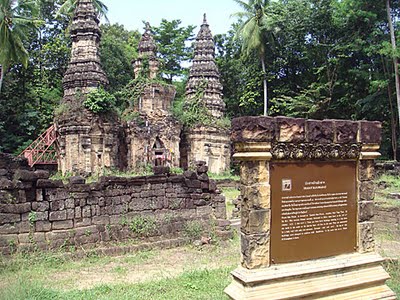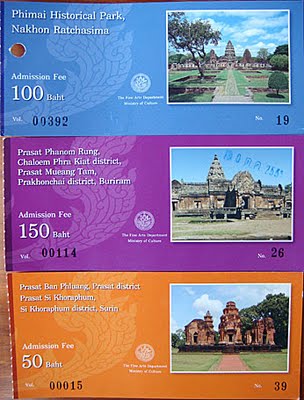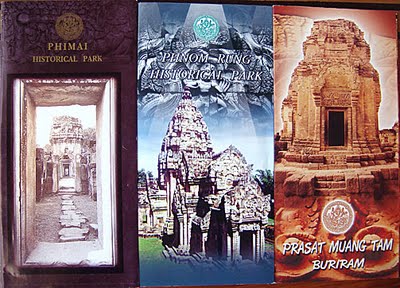Signage
One of the most obvious areas where the Thai authorities have the edge over their Cambodian counterparts is the signage in and around the temple sites. Not only does every single site, however minor, have a main introductory sign giving its basic history, but at the larger sites like Phimai and Prasat Phnom Rung, there are individual signs below each significant lintel, pediment and structure. Though the indoor museum at Phimai was closed for my visit, the smaller but perfectly formed museum at Phnom Rung was open and displayed as much information as anyone would want about the site and its historical significance. The Thai Department of Fine Arts in charge of ancient sites has obviously had longer to organize itself but there's a few things that Apsara and the Cambodian Ministry of Culture can learn from their neighbours in the provision of information. It starts with the neatly presented ticket stubs, the colourful free 12-page pamphlets available in different languages and goes through to the signs at the temples that I mentioned above. In addition, each of the sites I visited was well-maintained and tidy, even the smaller sites way off the beaten track, and again, the road signage to each of these smaller sites was well developed and plentiful. I'm sure this is on the to-do list of the Khmer authorities and the sooner it materializes the better.
Labels: Isaan, Phimai, Phnom Rung






